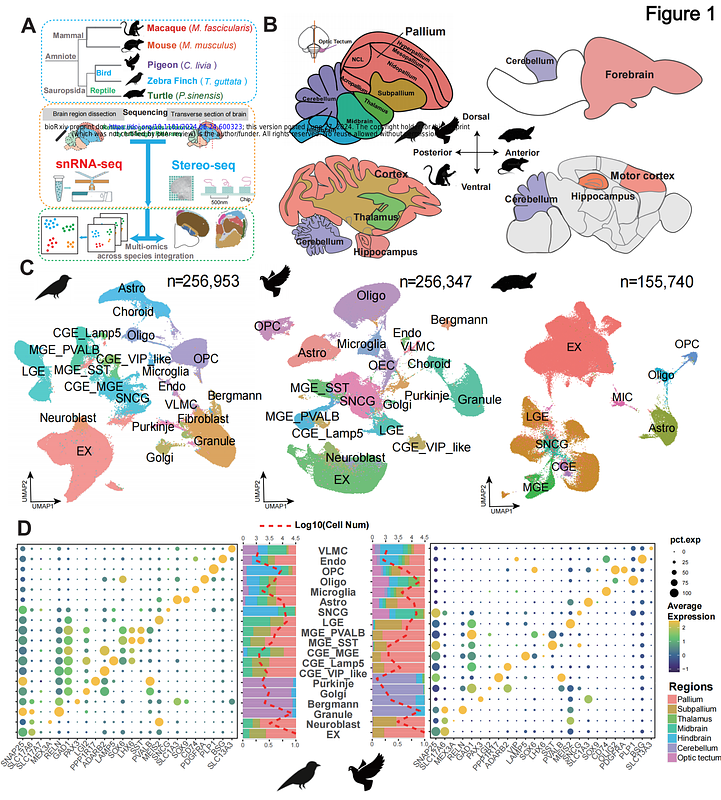Genomic evolution reshapes cell type diversification in the amniote brain

Genomic evolution reshapes cell type diversification in the amniote brain
Liu, S.; Chen, D.; Zhuang, Z.; Huang, M.; Huang, Y.; Yan, Y.; Zhang, Y.; Lin, Y.; Jin, X.; Wang, Y.; Huang, J.; Xu, W.; Pan, J.; Wang, H.; Huang, F.; Liao, K.; Cheng, M.; Zhu, Z.; Bai, Y.; Niu, Z.; Zhang, Z.; Xiang, Y.; Wei, X.; Yang, T.; Zeng, T.; Dong, Y.; Lei, Y.; Sun, Y.; Wang, J.; Yang, H.; Sun, Y.; Cao, G.; Poo, M.; Liu, L.; Naumann, R. K.; Xu, C.; Wang, Z.; Xu, X.
AbstractOver 320 million years of evolution, amniotes have developed complex brains and cognition through largely unexplored genetic and gene expression mechanisms. We created a comprehensive single-cell atlas of over 1.3 million cells from the telencephalon and cerebellum of turtles, zebra finches, pigeons, mice, and macaques, employing single-cell resolution spatial transcriptomics to validate gene expression patterns across species. Our study revealed significant species-specific variations in cell types, highlighting their conservation and diversification in evolution. We found pronounced differences in telencephalon excitatory neurons (EX) and cerebellar cell types between birds and mammals. Birds predominantly express SLC17A6 in EX, whereas mammals expressed SLC17A7 in neocortex and SLC17A6 elsewhere, possibly due to loss of SLC17A7 function loss in birds. Additionally, we identified a novel bird-specific Purkinje cell subtype (SVIL+), implicating the LSD11/KDM1A pathway in learning and circadian rhythms, and related numerous positively selected genes in birds, suggesting an evolutionary optimization of cerebellar functions for ecological and behavioral adaptation. Our findings elucidate the complex interplay between genetic evolution and environmental adaptation, underscoring the role of genetic diversification in the development of specialized cell types across amniotes.


